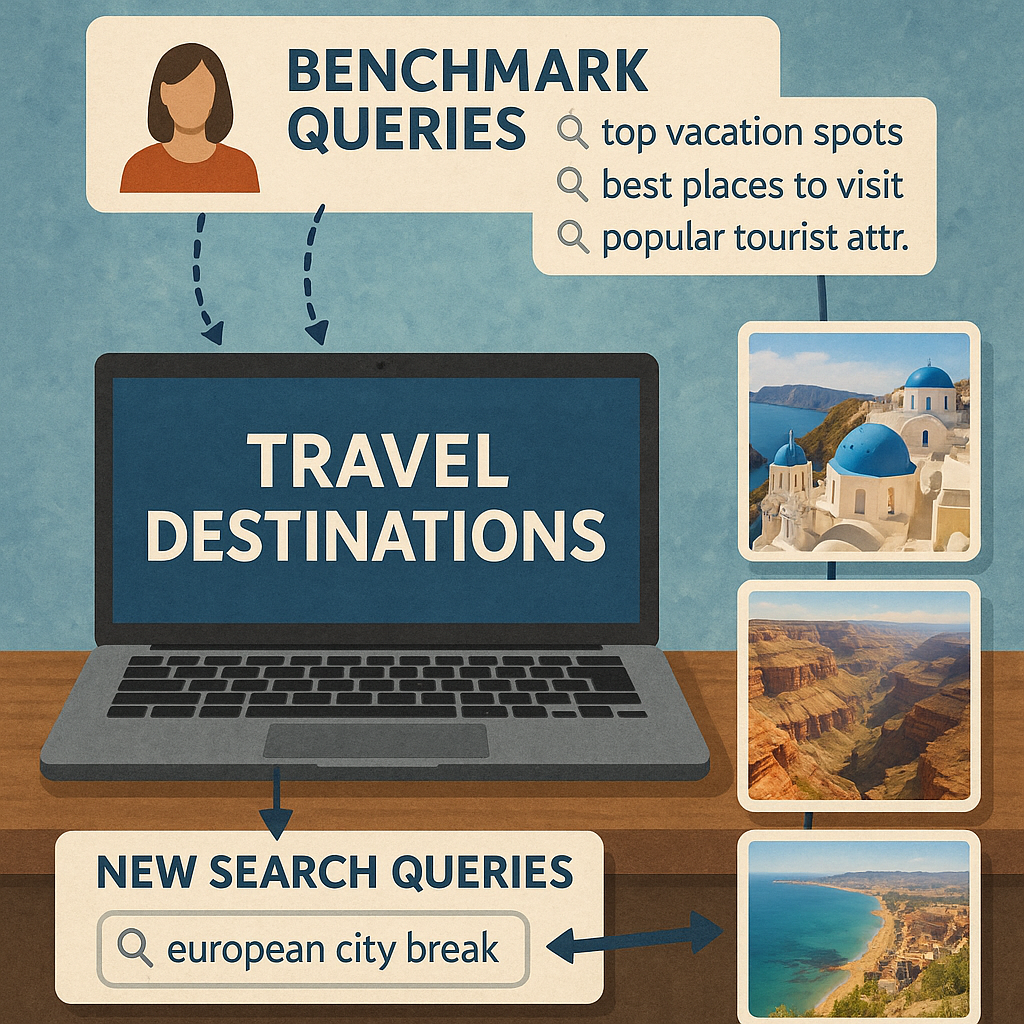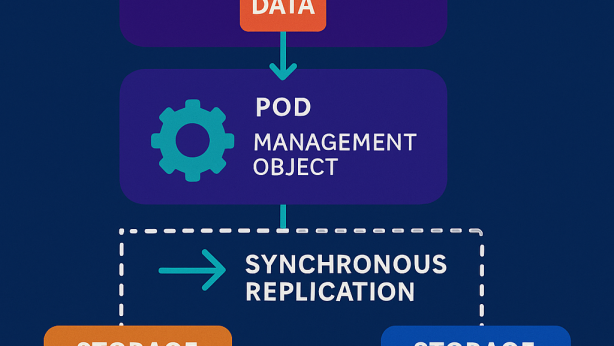Systems And Methods For Generating Benchmark Queries

Invented by Pattabhiraman; Balaji, Gupta; Ujjwal, Ajinkya, Jain; Rohit, Chen; Chien-Chen, Putman; Josiah Katsutoshi, Arakalgud; Gautam, Ranjan; Divyanshu, Wang; Yaxian

In today’s online world, getting the right content in front of the right user at the right time is key. This new patent application introduces a smart way to do just that, using artificial intelligence to learn what people are searching for and help match them with useful content. Let’s break down how this system works, why it matters, and what makes it different from what came before.
Background and Market Context
The web is filled with information. Every day, people type millions of questions, requests, and ideas into search bars. They might be looking for a plumber, a lawyer, a nearby restaurant, or advice on how to fix a leaky faucet. Behind the scenes, search engines and platforms work hard to figure out what people want so they can show helpful results and ads.
Businesses rely on this process. If someone is searching for “best personal injury lawyer,” companies want their ads or listings to show up. But if the person searches for “personal injury lawyer salary,” the intent is different, and an ad for legal services might not be useful.
To make these choices, platforms usually try to group search terms into “categories” or “verticals.” These could be things like “electrician services,” “plumbing,” “tutoring,” or “music lessons.” The more accurately a system can figure out which category a search belongs to, the better it can show the most useful content.
But this is not easy. People use many different words to mean the same thing. One user might search “help with home wiring,” while another types “find a local electrician.” Both want the same kind of service, but the words are very different.
Old methods tried to solve this by making lists of “benchmark queries.” These are example search terms that are definitely linked to a category. For electricians, that might include “electricians near me” or “best electricians.” If a user’s search matches one of these or is very close, the system can be pretty sure what the user wants.
However, making these lists is hard. It takes lots of time and knowledge, and people can miss important search phrases. Sometimes lists are too short and miss good matches, or too long and include phrases that do not belong. Plus, when new categories are added, it’s a rush to come up with new lists.

The world is changing fast. New services, products, and user interests are always popping up. Platforms need a way to build these benchmark lists quickly and accurately, and they need to match new, never-seen-before search queries to the right category without a lot of manual effort.
This is where the new invention comes in. It uses artificial intelligence to make better lists of benchmark queries, and it learns how to match search terms that are similar in meaning, not just in words. This makes the whole content selection process faster, smarter, and more useful for users and businesses.
Scientific Rationale and Prior Art
To understand why this invention matters, let’s look at how things have worked until now.
The old way was mostly manual. People who understood the categories would sit down and try to come up with as many relevant search terms as possible. They would guess what users might type if they wanted a service. Over time, this process got some help from tools that looked at popular search queries, but it still needed a lot of human effort.
Some systems used simple models to match search terms. The easiest was “exact match,” where only searches that were exactly like the benchmark query would count as a match. This misses many good queries, because people use language in different ways.
Later, more advanced systems used “grammar-based models.” These tried to look at the structure of the search—how words are put together. For example, they might know that “find a plumber” and “plumber near me” have the same basic meaning. But building these grammar models takes a lot of work and special knowledge about language, and they are hard to keep up to date as language changes.
Some tried machine learning, but these models often needed lots of labeled data and careful tuning. They still depended on starting with a good set of benchmark queries made by hand.
Another challenge was making sure that the benchmark lists were “diverse.” If the system only knows about “best electrician” and “electricians near me,” it can miss “help with home wiring” or “install ceiling fan,” which are real queries for the same service.

There was also a problem with “noise.” Sometimes, phrases that sound related are not. For instance, “electrician insurance” is not from someone looking for electrician services, but maybe someone trying to become an electrician or run a business. Systems need to keep out these false matches.
Most approaches were slow to adapt to new categories. If a new kind of service became popular, it took weeks or months to create good lists and train models.
Finally, handling different languages was a big problem. A system built for English would not work for Spanish or French without extra effort.
So, the prior art, or the methods used before, relied on manual work, simple matching, and slow updates. They had a hard time with new queries, new categories, and different ways people use language.
The new invention uses AI and language models to fix these problems. It builds benchmark query lists faster and makes them more complete. It uses new ways to match queries that look at the meaning, not just the words. It also handles different languages more easily.
Invention Description and Key Innovations
This new patent application introduces a clever system that uses artificial intelligence to make and manage benchmark queries for content selection. Let’s walk through how it works, step by step, and highlight what makes it special.
At its core, the system has a few key parts:
First, it uses a language model. This is a kind of AI that has learned from huge amounts of text, like websites, reviews, ads, and past search queries. The language model understands how people talk about different services and can spot patterns in language that mean the same thing, even if the words are different.

To build a set of benchmark queries for a category (like “plumber” or “electrician”), the system creates a text prompt. This is a short message that tells the language model what kind of search queries to generate. The prompt might include real reviews from customers, website content, ads, or even known search queries. It can also include rules, like “don’t make queries that mention a location” if the system wants to avoid location-specific matches.
The system feeds this prompt to the language model, which generates many possible search queries that users might type if they are interested in that category. Because the language model has seen so much data, it can come up with a wide variety of queries, capturing the different ways people ask for the same thing.
But not every generated query is useful. Some might be too rare, too general, or not really about the service. So, the system checks each one using rules. It might look at how often the query is used, or if people who use that query tend to click on the right kind of content. It can also use human reviewers to check if the query makes sense for the category. Bad queries are removed; good ones stay.
Sometimes, the system removes details that are too specific, like city names, to keep the queries general enough to match many users. It also fixes spelling or other small mistakes.
Once the benchmark set is ready, the system can use it in two ways:
One, it can match new user search queries to the benchmark set directly. If someone types a query that is the same or very close to a benchmark query, the system knows what category to use.
Two, it can expand the benchmark set by finding other queries that mean the same thing. Here’s where the real magic happens. The system uses machine learning models to turn each query into a “vector”—a set of numbers that represent the meaning of the query in a multi-dimensional space. Queries that mean similar things are close together in this space, even if they use different words.
When a new search comes in, the system changes it into a vector and looks for benchmark queries that are close by in this space. If it finds one, it knows which category the query belongs to, even if the words are different.
This method allows the system to handle new, never-seen-before queries by matching their meaning, not just their wording. It works across languages, too, by creating separate spaces for each language or marking each query’s language so only similar languages are compared.
The system can also find sub-categories. For example, in “daycare,” it can tell if a query is about “infant programs” or “after-school care,” based on which benchmark query it is closest to.
Once the system has figured out the category, it picks the right content to show—ads, links, or other results. It can use rules about which ads to show, how much a business has paid to be shown, or safety rules to keep out inappropriate content.
The whole process is fast, flexible, and needs little manual work. If a new service category comes up, the system can build a benchmark set in minutes by giving the language model a new prompt. It can also keep learning from new data, making the matches better over time.
The key innovations are:
– Using AI language models to generate benchmark queries automatically, making the lists more complete and diverse.
– Filtering and improving these lists with rules and human checks, so only high-quality queries stay.
– Matching queries by meaning, not just words, using vectors in a multi-dimensional space, so the system finds matches even when the words are different.
– Handling different languages by making sure only queries in the same language are matched.
– Expanding benchmark sets fast and easily, so the system can keep up with new services and trends.
This approach breaks out of the slow, manual, language-specific methods of the past and uses AI to make content selection smarter, faster, and more helpful for everyone—users, businesses, and platforms alike.
Conclusion
With this new system, content selection moves into a new era. By letting artificial intelligence do the heavy lifting, platforms can understand what users want, even when they say it in new or unexpected ways. Businesses reach the right customers more often, and users get content and ads that matter to them. This patent application shows how AI can make everyday online searches more accurate, more efficient, and more personal. For anyone building or using search engines, ad platforms, or service finders, this is a big step forward—and a sign of how smart, responsive, and user-friendly the web can become.
Click here https://ppubs.uspto.gov/pubwebapp/ and search 20250217423.


